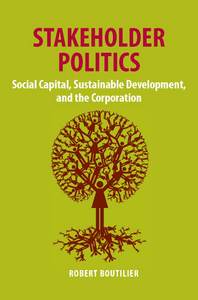Read Shared Value article here

Companies are spending millions of dollars in local communities to support sustainability – environmental, social and governance (ESG) – programs that develop infrastructure, provide vocational training, transfer skills, support a variety of local institutions and stakeholder groups and much, much more. Measuring the real and perceived benefits to communities of sustainability programs is important for assuring positive outcomes. Thankfully, there are many proven tools and practices for measuring the impact of sustainability programs. But this is only half the story.
In addition to creating benefits for the local communities, sustainability investments also create significant business value for companies. Intuitively, companies understand that there is a business case for being a good corporate citizen. Positive relationships with communities, civil society and governments help ensure that, among other things, production schedules are met, access to labor, land and resources are maintained, and reputations are kept intact.

The Financial Valuation Tool calculates a probable range for the net present value (NPV) back to the company from a portfolio of sustainability investments, including value protected through risks mitigated and value created through productivity gains. The FV Tool, which is used to plan, prioritize, measure and scale a company’s site-level sustainability investments, is designed to supplement a company’s traditional discounted cash flow valuation model. The tool can compare two different sustainability investment scenarios, based on risks and opportunities faced by an operation/asset, such as a mine or pipeline, to help managers decide which scenario is likely to yield the most value for the company by creating positive impact for surroundings communities.
See case studies here, articles here, quality assessment tool (personal) here
PRIMA helps executives and public officials manage high-impact risks and opportunities in socio-political systems in order to identify and influence stakeholder coalitions to influence public policy and corporate reputation.
Mission Statement
PRIMA identifies and quantifies high-impact risks and high-yield opportunities in complex sociopolitical and infrastructure systems. We provide our clients with actionable insights by analyzing vast quantities of data to identify the stakeholder positions with the greatest potential impact on financial performance or mission attainment.

Markets We Serve
PRIMA’s clients share a common concern: the profound impact that critical stakeholder coalitions or complex system interactions may have on financial performance or mission attainment. Whether the system in question is…
 a political system in which policymakers with different powers seek to accommodate organized interest groups with different priorities, or
a political system in which policymakers with different powers seek to accommodate organized interest groups with different priorities, or a social system in which organized interest groups attempt to shape the perceptions of ordinary consumers and voters
a social system in which organized interest groups attempt to shape the perceptions of ordinary consumers and voters
PRIMA assists private executives and public officials by identifying the stakeholder coalitions or infrastructure system architectures toward which limited risk mitigation resources can be most effectively directed.
For more information, see presentation here
NB: Witold J. Henisz is a principal in PRIMA LLC
This outstanding book offers you a fact-based strategy development process for managing issues and controversies.
If you’re a practitioner, it details how to ground your strategic advice on empirical research that reveals the sociopolitical dynamics of the issue. It is the first book to approach issues management from a blended application of advances in stakeholder theory and social network analysis. You’ll learn how to track the sociopolitical environment in order to (a) avoid risks and crises, (b) obtain essential environmental scanning information for strategy development or adjustment, and (c) secure the organization’s reputation and access to vital resources.
The techniques described in this book have proven effective in issues management projects around the world. They work equally well whether the stakeholders are illiterate subsistence villagers or Internet savvy global activists.
 Buy the book here
Buy the book here
Stakeholder Politics: Social Capital, Sustainable Development and The Corporation gives companies a “how to” guide for addressing the twin problems of maintaining political legitimacy, and promoting sustainable development. The text presents a typology of stakeholder networks that helps managers and community leaders identify and improve the social capital patterns in their own networks. Once they know these patterns, they can move their networks towards those that foster sustainable community development. The book describes vivid cases in which managers and community stakeholders have used the authors’ approach successfully, and in addition provides managers with handy tools for predicting and avoiding community-level socio-political risk around stakeholder issues. With its proven and practical approach, Stakeholder Politicspromises to be a valuable guide for managers and academics who are invested in sustainable development worldwide and stakeholder issues alike.
 Buy the book here
Buy the book here





